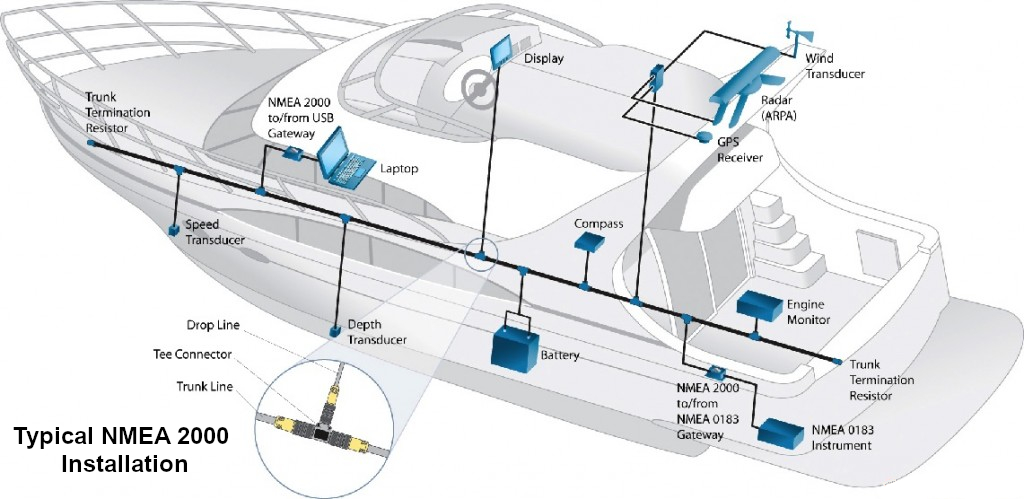The National Marine Electronics Association (NMEA) is a US-based marine electronics trade organisation, who publish the standards for communication between marine electronics. There are currently two main standards: NMEA 0183 and NMEA 2000 and a new NMEA OneNet standard that will soon start to be adopted.
NMEA 0183

NMEA 0183 is the oldest of the standards (released in the 1980s) and has been incredibly successful. Based on the RS422 computer standard, NMEA 0183 provides two wires to transmit data (Talkers) and two wires to receive data (Listeners). Using differential voltages and opto-isolated components, a Talker device can send data to one or more Listener devices, reliably over distances up to 50m.
Despite its age, NMEA 0183 is very commonly found on all types of vessels, from the smallest Yacht to the largest Super Tanker. There is still a lot of work being done by NMEA work groups to keep NMEA 0183 up to date with the latest communication systems and particularly in the world of GPS, where just about every smart phone’s GPS module uses NMEA 0183 to internally pass data to the phone’s microprocessor.
NMEA 0183 uses simple 8 Bit ASCII (human readable) encoded data, where each type of data (Position, Depth, Wind, etc.) has a different “Sentence” whose prefix denotes what type of data is included in the sentence. Some example sentences from one of our GPS160 “Trinav” Sensors are shown below…
$GNRMC,164425.000,A,5229.1357,N,00206.9107,W,0.05,0.00,260922,,,A*6D
$GNVTG,0.00,T,,M,0.05,N,0.1,K,A*17
$GNGGA,164425.000,5229.1357,N,00206.9107,W,1,06,4.4,133.4,M,48.2,M,,0000*5A
$GNGLL,5229.1357,N,00206.9107,W,164425.000,A,A*52
$GNZDA,164425.000,26,09,2022,,*47
$GNVLW,,N,,N,0.000,N,0.000,N*44
NMEA0183 is the most common standard on board and almost every marine electronic system has an NMEA0183 input and output. However, it is important to note that NMEA 0183 can operate at different speeds, referred to as “baud rates” which you need to know:
- 4800 baud is the original NMEA 0183 speed, used by chart plotters, GPS antennas, marine instruments, etc.
- 38400 baud, referred to as High Speed (HS) NMEA 0183, was introduced for AIS systems but also used by NMEA 0183 Multiplexers.
- 115200 baud is the highest NMEA 0183 speed, used by PC software on racing yachts to achieve the fastest data update rates.
Knowing the different NMEA speeds is important when connecting and linking different marine electronics products. Although most of the new marine electronics products use the new NMEA2000 standard, many still have an NMEA0183 interface for legacy systems.
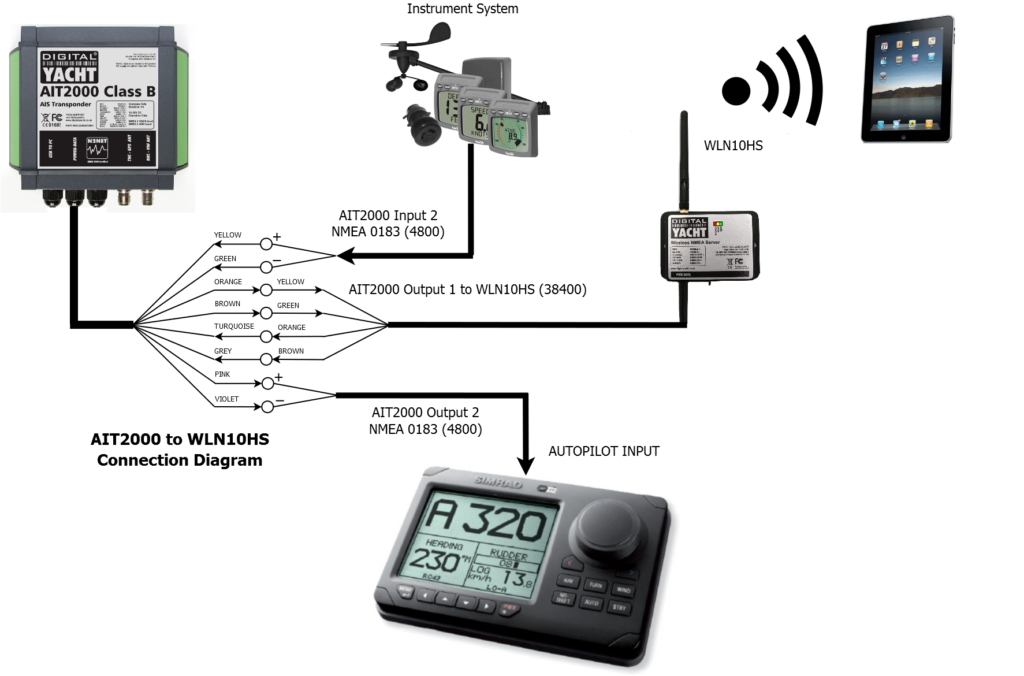
Digital Yacht have a wide variety of products that use NMEA 0183, as well as gateways that will convert from one NMEA format to another.
NMEA 2000
NMEA 2000, as the name suggests, was released at the start of this millennia and after a slow start is now the standard interface for all new marine equipment for pleasure boats and is starting to be seen on commercial ships. Based on the Controller Area Network (CAN) interface technology originally developed for cars, NMEA 2000 uses a common pair of data wires to transmit and receive data between any equipment connected to the network.
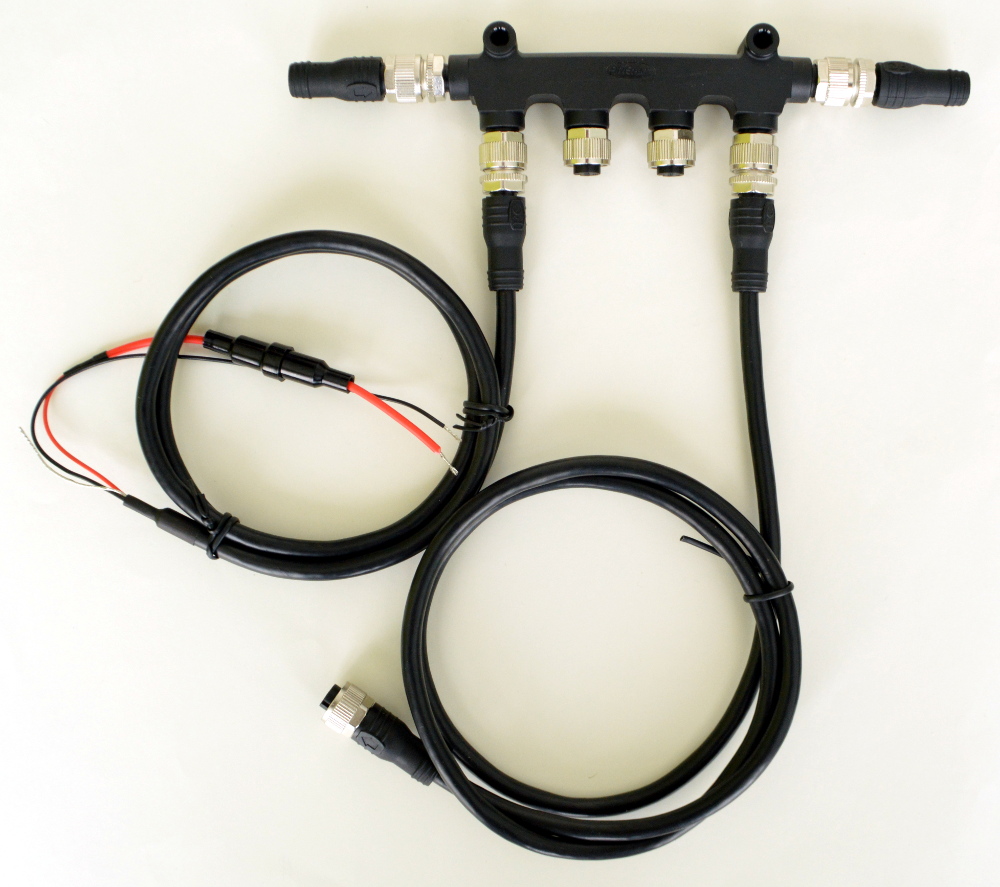
The NMEA association created this new standard due to the increasing number of marine electronic products on board and thus having more instruments to communicate between each other. It is a very easy plug-and-play communications standard. Most of marine electronic products directly take their power from the NMEA2000 network. The main goal of this standard is to increase the communication speed between marine electronics products and also to facilitate the installation of marine electronics products.
NMEA 2000 uses binary encoded data, transmitted in packets of data called Parameter Group Numbers (PGNs) where each type of data (Position, Depth, Wind, etc.) has a different “PGN”. Each PGN has a six digit decimal PGN number and PGN name. The contents of the binary data (not human readable) is formatted/encoded in to fixed length fields and a full list of the current PGNs and Fields can be downloaded from the NMEA website by clicking the link here.
Digital Yacht have a wide variety of products that use NMEA 2000, as well as gateways that will convert from one NMEA format to another.
There are other “flavours” of CAN such as J1939 (a very close cousin of NMEA 2000), CAN Open and other proprietary CAN protocols which can also be found on boats, but NMEA 2000 with its opto-isolation, power over network, shielded cabling and standard connectors is the best CAN protocol for the marine environment.
An NMEA 2000 network, installed properly and with only certified NMEA 2000 equipment installed is a very reliable and flexible network but there are certain installation rules, conventions and technical limitations that are important to know when dealing with NMEA 2000 and our NMEA 2000 Guide includes all of the information that you need to install your own reliable NMEA 2000 network.
And NMEA OneNet?
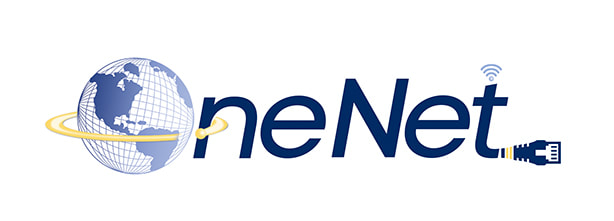
Things are always changing in the world of marine electronic interfacing and with video, radar, sonar and other high bandwidth features appearing on Multi-Function Displays (MFDs) on most modern vessels, the NMEA association decided that a new, faster interface was required.
Based on the same Ethernet networking technology found in your home and office computers, OneNet is designed to operate on wired Ethernet networks at speeds up to 10Gbits, using the latest IPv6 protocol and network security technologies.
Some have referred to OneNet as “NMEA 2000 on steroids” and in pure speed and bandwidth terms this is a good way to think of OneNet. However, OneNet and NMEA 2000 share many of the same PGNs and communication methods and are designed to co-exist, with NMEA 2000 taking care of the lower level sensor type data and OneNet handling the high bandwidth and more complicated data.
It will be a while before you start to see NMEA OneNet devices appear on vessels, but its announcement has created a lot of interest and adoption is likely to be quicker than any of the previous NMEA standards.
 United States
United States United Kingdom
United Kingdom France
France Europe
Europe Germany
Germany Australia
Australia Spain
Spain Italy
Italy